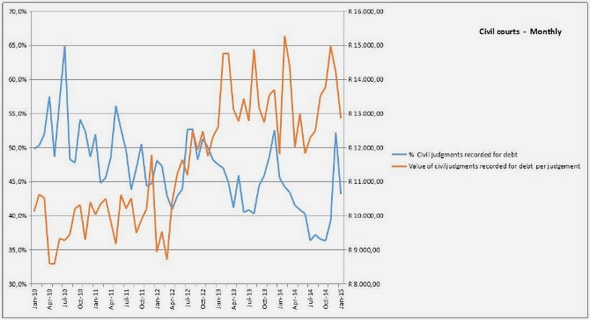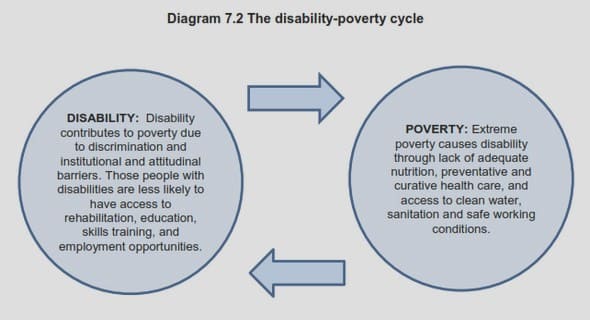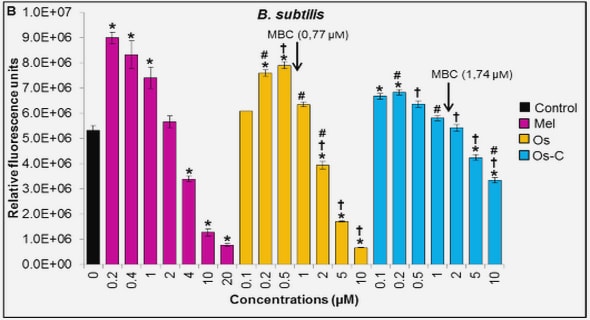Get Complete Project Material File(s) Now! »
CHAPTER 2 ADVERTISING IN FINANCIAL SERVICES
INTRODUCTION
In this chapter advertising in financial services and its various elements, specifically those aimed at eliciting a response from the intended target market through direct response advertising, is discussed. Advertising is defined as a paid non-personal communication from an identified sponsor, using mass media to persuade or influence an audience (Richards & Curran, 2002). The effectiveness of advertising and how it is measured is also addressed here, as well as how advertising has evolved over the last couple of decades. Direct response advertising and the consumer behaviours it is attempting to shape through various psychological and emotional means in the advertising message, design and placement is also discussed.
BACKGROUND
Shareholder value is the only thing that matters for listed companies. To unlock more shareholder value, some basic business objectives have to be stated, benchmarked and managed. These include acquiring new clients through marketing and sales efforts, operationalising after-sales support functions for clients in order to retain them, as well as keeping expenditure as low as possible to keep income versus expenditure and price earnings ratios at an attractive level for the existing and potential investors or shareholders (Petersen, McAlister, Reibstein, Winer, Kumar & Atkinson, 2009). Market analysts who position company sales, client satisfaction and cost efficiency levels in relation to competitor levels as well as within predefined sub-industries as defined on various stock exchanges scrupulously dissect these ratios in the researcher’s experience. These analysts’ reports drive investor sentiment, which in turn determines the share price of the listed entity. Understanding the business drivers of client acquisition, satisfaction and retention, as well as managing costs within certain predetermined bands (budgets) is thereforee critical to the long-term success of a business and for its shareholders.
Advertising of a company’s brand and products affects all of these business drivers mentioned above. Not only is advertising responsible for creating brand and product awareness amongst clients, it is also one of the biggest cost items on a company’s balance sheet. Spending as little as possible (on advertising) to communicate a company’s value 44 proposition and values necessitates measurement of the effectiveness of its advertising campaigns.
The question company boards generally asks regarding advertising is, does it work? Since the first advertisements were created and placed in the public domain, there has been a firm belief that only a portion of the money spent on advertising reaps dividends for the company advertising its products and services. This remains a practical problem for the advertising industry and marketing practitioners, even though there are myriad analytical tools and systems to assist them in planning, executing and measuring the outcomes of a campaign (Holmes, 1997). Accountability in advertising and marketing has become a significant issue, as the budgets these divisions represent constitute a big portion of management expenditure, and company sustainability with regard to future revenue is non-negotiable. However, the interplay between sales and advertising remains ambiguous, as other environmental factors such as promotions, brand perceptions and public relations (PR) efforts can all influence sales of a product. According to Jones (1995), the answer lies in the proper use of single source data. This implies measuring specific households’ sales data (buying behaviour) before and after exposure to an advertisement. The measurement should be taken within seven days after exposure to the advertisement to ensure that the results are not affected by other factors.
Jones (1995) added to a steadily growing body of single source research that has attempted to explain the effect of short-term advertising exposure on product sales since the latter half of the 20th century. Colin MacDonald (1979) was, for instance, one of the first to wager conclusions regarding advertising effectiveness based on sales results following short-term exposure to advertising and the harbinger of anew movement in advertising that favoured achieving operational objectives over awards. The economic implications of agencies becoming publically owned entities necessitated this shift of focus. In this new environment, there were shareholders demanding dividends from their investments, which meant agencies had to acquire new clients (companies) and specifically keep client needs in mind during the design, development and execution of advertising campaigns. These needs included eliciting direct responses from the marketplace by advertising and selling products and services that were much more short term in nature than brand and product awareness advertising (Jones, 1989).
Single source research projects led to the creation of different advertising metrics that drew information and data from dependent as well as independent variables. These metrics are (Jones, 1995):
- short-term advertising strength (STAS), which represents the brand’s share in all purchasing instances;
- baseline STAS, which refers to the brand’s natural share of sales;
- stimulated STAS, which refers to the purchases made by a household that has been exposed to the brand’s advertising in the previous seven days; and
- the STAS differential, which is the difference between baseline STAS and stimulated STAS.
Variations in advertising intensity (the total spend of a brand within its category or industry in relation to its market share), sales promotion efforts and above the line (ATL) brand spend all combine to determine both the short-term effects of advertising on sales as well as the company’s longer-term brand equity.
Three information streams are used in obtaining the single source data required to derive STAS (Jones, 1995). Global marketing research firm ACNielsen provides statistics on household purchasing and television viewing and information on which brands were advertised during a specified period. The focus on short purchasing cycles makes these metrics good indicators for the packaged consumer goods industry and even for some intangible offerings within the financial services industry that address immediate personal gratification needs such as personal loans, cheque accounts and medical insurance.
From the results of the STAS differential, brands can be divided into four categories (Riecken, 2007):
- Alpha one brands where advertising works to generate sales,
- Alpha two brands where the advertising has stopped working,
- Beta brands where the advertising sometimes works; and
- Gamma brands where the advertising simply does not work for the company.
In the cases of Alpha two, Beta and Gamma brands, a new creative brief, new benchmarked business objectives and re-engineering of the marketplace’s brand perception need to be initiated to facilitate better results. Alpha one brands has been built through various brand initiatives to instil trust in the values and culture of the organisation, before specific value propositions were positioned to specific subsets of the targeted audience. These value propositions, seen in the context of credible delivery, are then taken up by the targeted base in an efficient manner, with clear return on marketing investment.
During the 1980s the advertising industry seemed to experience an upsurge in revenue and turnover, as the global economy grew at a healthy rate; new businesses needed to advertise in order to build public awareness of and sell their brands and products, while existing businesses needed to differentiate themselves and build on existing brand equity (Kim, 1992). The United States advertising industry grew at 9.8% annually during this time, almost twice as fast as the inflation rate.
By 1990, companies operating within the United States spent more than $128 billion on advertising (Kim, 1992), with the financial services sector especially robust in growth of spend. However, this growth masked the decline in awareness advertising; with direct marketing spend increasing to such an extent that it represented two-thirds of the industry. As marketing practitioners favoured the pursuit of short-term targets, budgets were extricated from theme or awareness advertising, putting pressure on the traditional advertising agency business model. Ironically, metrics devised in the 1970s to measure the effectiveness of STAS helped build confidence in the direct advertising environment, whereas a lack of similar metrics in the traditional brand space made it more difficult for marketing practitioners within companies to justify spend on awareness and brand equity campaigns.
Starting in the 1990s and into the new millennium, new channels of communication and technological platforms of direct engagement as well as changes in the media market have further compounded the problem of finding the right media and marketing combination to deliver the desired results, according to Fletcher (2001). Due to the advertising bombardment via traditional channels, advertisers run the risk of repelling their target markets rather than attracting them. More choice in channels and programming, as well as consumer goods and services, has translated into a low tolerance for poor programming and an even lower tolerance for poor advertising, with more than 70% of respondents in a new millennium study complaining about the frequency of advertising (Fletcher, 2001). This advertising fatigue has a detrimental effect on sales in the experience of the researcher, especially on goods and services that require long-term planning such as life cover, home loans and car financing, but it has less of a negative effect on brand awareness or equity. Irritation factors contained within advertisements include the style of the advertisement (serious, nostalgic, comedic or fact-based), whether it features a single character or spokesperson and whether the soundtrack is characterised by dominant repetitive music or music featured in the background. Thereforee, it appears the creative execution together with a detailed understanding of the targeted segment is critical to ensure likability and to extract as much value from an advertisement campaign as possible.
Targeting the appropriate consumer base and incorporating its needs, geographical location, behavioural patterns, brand perceptions and likes and dislikes are key to the creative treatment, as is the type of medium used (Anand & Shachar, 2009). Understanding these elements prevents miscommunication, a perception of vagueness and misperceptions about the message and brand.
Different types of campaigns exist with different business objectives. Building trust in a company is an example of a desired outcome of a pure brand building campaign, whereas achieving sales targets would be the desired outcome of a direct advertising campaign. Appropriate metrics for these different types of campaigns have become essential in determining the levels of spend that will allow the desired business objectives to be met. Metrics are defined as measurements of process elements such as inputs, activities and outputs in relation to a specified benchmark or predetermined level of performance (Smith, 2004).
Advertising campaigns have become multi-faceted as new technologies, knowledge about existing customers and an increased focus on short-terms wins have made integrated brand, direct response and PR campaigns more successful than traditional campaigns with single objectives. This integrated approach has, however, created confusion within the marketing fraternity, which commonly uses metrics to gauge effectiveness (Roberts & Ambler, 2006).
To avoid such confusion, focus should be placed on metrics that measure:
- future financial performance, which will enhance lifetime value for the customer;
- marketing productivity; and
- other elements that would assist the marketing practitioner with formulating future marketing strategies.
As advertising spend in the financial services industry has remained significant regardless of market fluctuations and recessions, advertising campaigns for companies in this industry have become so multi-faceted that mechanisms for gathering, distributing and managing leads is built into every part of the business process (Hosford, 2010). Marketing practitioners are working more efficiently, using a combination of marketing techniques to deliver according to performance targets.
Advertising does work in generating sales, Kim (1992) argues, although some advertising works better than others. Brands that use a combination of media types, themes and creative execution, sell more product in the long term, as brand perception and positive customer experiences are built. However, the marketing combination that will ensure optimal responses and sales needs to be identified, and this study aims to do so.
CHAPTER 1 INTRODUCTION AND JUSTIFICATION OF THE STUDY
1. INTRODUCTION
1.2. FINANCIAL SERVICES
1.3. JUSTIFICATION
1.4. THE RESEARCH PROBLEM
1.5. RESEARCH APPROACH
1.6. RESEARCH AIMS AND OBJECTIVES
1.7. DELIMITATIONS OF THE STUDY
1.8. CONTRIBUTION TO SUBJECT AREA
1.9. STRUCTURE OF THE THESIS
1.10. SUMMARY
CHAPTER 2 ADVERTISING IN FINANCIAL SERVICES
2. INTRODUCTION
2.1. BACKGROUND
2.2. DIRECT RESPONSE ADVERTISING IN THE FINANCIAL SERVICES INDUSTRY
2.3. THE PSYCHOLOGICAL PROCESSES TRIGGERED IN ELICITING RESPONSES THROUGH ADVERTISING
2.4. BRAND AS EXPRESSED THROUGH PURCHASE INTENTION
2.5. PUBLIC RELATIONS AND DIRECT RESPONSE ADVERTISING IN FINANCIAL SERVICES
2.6. THE RELATIONSHIP BETWEEN MARKETING AND SALES
2.7. ADVERTISING EFFECTIVENESS
2.8. ADVERTISEMENT RECOGNITION AND RECALL
2.9. BARRIERS TO COMMUNICATION
2.10. CURRENT ADVERTISING METRICS
2.11. SUMMARY
CHAPTER 3 CLIENT SATISFACTION
3. INTRODUCTION
3.1. BACKGROUND
3.2. CLIENT EXPERIENCE
3.3. CLIENT EXPERIENCE IN THE FINANCIAL SERVICES CONTEXT
3.4. CUSTOMER INVOLVEMENT AND ITS IMPACT ON ADVERTISING EFFECTIVENESS
3.5. CLIENT SATISFACTION
3.6. CLIENT SATISFACTION AND LOYALTY
3.7. LOYALTY PROGRAMMES
3.8. SERVICE-ENABLED CUSTOMER EXPERIENCE
3.9. REQUIREMENTS FOR SETTING UP A SERVICE-ENABLED CLIENT EXPERIENCE
3.10. SUMMARY
CHAPTER 4 SALES
4. INTRODUCTION
4.1. BACKGROUND
4.2. CUSTOMER-CENTRED SALES STRATEGY WITHIN FINANCIAL SERVICES
4.3. NEW CLIENTS
4.4. CROSS-SELLING (EXISTING CLIENTS)
4.5. IDENTIFYING PROSPECTS
4.6. SALES PERFORMANCE QUOTAS
4.7. THE SALES CYCLE
4.9. SUMMARY.
CHAPTER 5 RESEARCH APPROACH, DESIGN AND METHODOLOGY
5. INTRODUCTION
5.1. RESEARCH APPROACH
5.2. RESEARCH PROCESS
5.3. SUMMARY
CHAPTER 6 MARKETING METRICS: A QUALITATIVE UNDERSTANDING
6. INTRODUCTION
6.1. DISCUSSION GUIDE FOR THE FOCUS GROUPS
6.2. THEMES IDENTIFIED
6.3. SUMMARY
CHAPTER 7 MODEL CONSTRUCTION AND VALIDATION
7. INTRODUCTION
7.1. MODEL COMPONENT WEIGHTING
7.2. GAME THEORY MODELLING
7.3. SUMMARY
CHAPTER 8 CONCLUSIONS, RECOMMENDATIONS AND LIMITATIONS
8. INTRODUCTION
8.1. THE MARKETING METRICS MODEL
8.2. ATTAINMENT OF RESEARCH OBJECTIVES
8.3. LIMITATIONS OF THE STUDY
8.4. CONTRIBUTION TO MARKETING THEORY
8.5. SUMMARY
8.6. AREAS FOR FURTHER RESEARCH
9. LIST OF REFERENCES
GET THE COMPLETE PROJECT


